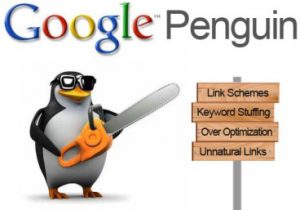Google Unleash Penguin 2.1 Update
If you haven’t got a Twitter account, you need to. Why? Because last Friday on the 4th October 2013 Matt Cutts announced to the world that Google had unleashed the Penguin 2.1 update. He also said that this one update would affect 1% of all searches to a “noticeable degree” – and since we’re all old friends with Penguin 2.0, we were all left feeling a little bit unnerved.
Penguin 2.1 launching today. Affects ~1% of searches to a noticeable degree. More info on Penguin: http://t.co/4YSh4sfZQj
— Matt Cutts (@mattcutts) October 4, 2013
 What is the Penguin 2.1 Update?
What is the Penguin 2.1 Update?
In a nutshell, this is an update on Penguin 2.0 which was designed to fight back against the prolific amount of web spam which was skewing their search results. What does this mean? It means that the new Penguin 2.1 update will be better at finding web spam and targeting those websites, ensuring they are penalised for using black hat techniques.
How Many Penguin Updates Has There Been?
The Penguin update has been bandied around for a while now, but how many updates has there been? Below is a summary of the updates to date.
- 24th April 2012 the Penguin 1.0 was announced
- 26th May 2012 Penguin 1.2 was announced
- 5th October 2012 Penguin 1.3 was announced
- 22nd May 2013 Penguin 2.0 was announced
- 4th October 2013 Penguin 2.1 was announced
How is the Penguin 2.1 Update Different to the Penguin 2.0 Update?
Well, as it’s the same algorithm it will still be targeting the same web spam techniques, however as this update is said to affect 1% of all searches the likelihood is that this algorithm update will be able to go deeper into a website to identify web spam activities happening at a deeper level.
What You Can Do To Avoid the wrath of Penguin 2.1
We know a lot about the previous Penguin 2.0 update which is why we can assume what will trigger a penguin attack. Below is a list of spammy techniques which should be avoided at all costs;
- Buying links using exact match anchor text
- Blog/forum comments which are done solely for the link
- Guest Posts which are posted on irrelevant sites which are low-quality
- Article directories which are used to create a link
As you can see, there is a trend here. Any links which are built in an unnatural way on a poor quality website could result in disaster for your SEO campaign and while a few of the pre-mentioned link building tactics are bad a few of them can be used correctly to build links which are natural.
 How Do You Know If You’ve Been Hit By the Penguin 2.1 Update?
How Do You Know If You’ve Been Hit By the Penguin 2.1 Update?
You’ll need to keep checking your organic traffic and if it drops suddenly then the likelihood is that you’ve been by the latest Penguin 2.1 update. Another way to check if you’ve been hit by the new Penguin 2.1 update is to check your Webmaster tools account to see if you’ve had any manual penalties applied.
Having a Google Webmaster account is essential, especially with the secure search which has led to a dramatic increase in (not provided) keywords, click here to sign up.
What Should You Do If You Think An Attack Is Imminent?
If you’ve been using black hat techniques to influence your current SERPs then it’s no wonder that you are worried. If you are worried that a Penguin 2.1 attack is imminent we at Anicca can help. We offer a Link Profile Analysis services whereby our technical SEO team will analyse your back link profile and remove any links which are dubbed as bad or spammy.
For more advice or to get your backlink profile checked make sure you get in touch with the team here at Anicca.



